Goth Chick News: The Woman in Black
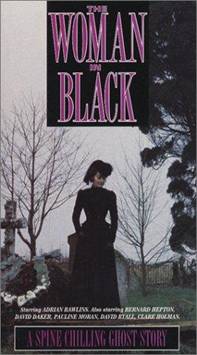 Anyone who has been reading these entries with any regularity knows that the word “minimalist” will never be used in the same sentence with my name. I seem to be visually starved, needing to be perpetually surrounded by interesting if not strange things to look at. This can easily be proven by the fact I cohabitate with a voodoo doll collection and three German Shepherds.
Anyone who has been reading these entries with any regularity knows that the word “minimalist” will never be used in the same sentence with my name. I seem to be visually starved, needing to be perpetually surrounded by interesting if not strange things to look at. This can easily be proven by the fact I cohabitate with a voodoo doll collection and three German Shepherds.
Maybe that’s why I’ve always been drawn to Halloween.
I mean, you’ve probably heard people comment on over-the-top Christmas decorations, but I doubt you’ve heard anything but awe-struck admiration for someone who’s gone nutty with their front yard zombie display.
Or maybe my neighbors are just trying to be nice.
In any case, it’s rather odd for me to tell you that one of my all-time-favorite books, which then made it to the top of my theater list — and will eventually, I hope, make it to my top ten movie list — is anything but visually cluttered. Speaking at least for the book and the play, The Woman in Black derives its horror from its simplicity, and that’s really what a classic fright is about, isn’t it? It’s why no blood-splattered, psychopath training film like Saw or Hostel will ever be as scary as the scare that gets in your head.
Back in 1983, author Susan Hill wrote the tale of a young lawyer summoned to settle the affairs of the deceased Alice Drablow, who had lived on a remote English estate cut off from the mainland during high tide (sounds awesome so far, right?) As he pieces together Alice’s tragic life, the lawyer begins to uncover a tragic family secret and its horrifying guardian, the Woman in Black. It’s a premise just simple enough to make your skin crawl.
 SF author Bud Webster informs us that his book Anthopology 101: Reflections, Inspections and Dissections of SF Anthologies, is now available from The Merry Blacksmith Press. Bud tells us:
SF author Bud Webster informs us that his book Anthopology 101: Reflections, Inspections and Dissections of SF Anthologies, is now available from The Merry Blacksmith Press. Bud tells us: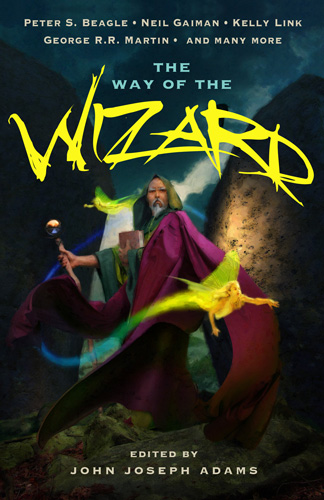
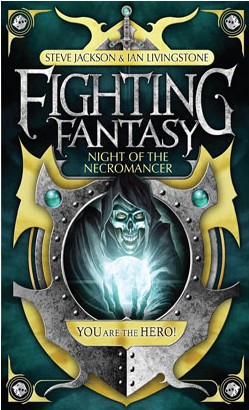 Night of the Necromancer
Night of the Necromancer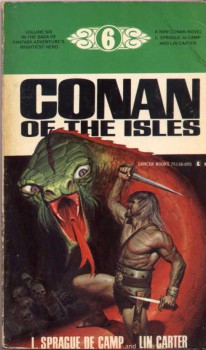
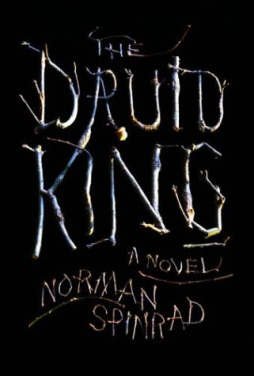 In Part Two of his blog series on the Publishing Death Spiral (read Part One
In Part Two of his blog series on the Publishing Death Spiral (read Part One 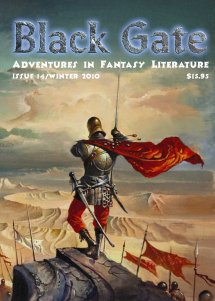 Sixteen of your US dollars. That’s what the latest (monster) issue of Black Gate has cost you in these days of fear and crumbling factories. It’s strange, isn’t it? You’ll spend all that money on a collection of fiction and game reviews when the internet is bursting with so much free content. If you go looking right now, you can find a million Sword & Sorcery stories out there that you wouldn’t even need to pirate: the authors, overcome in a delirium of generosity, are only too thrilled to supply them for free.
Sixteen of your US dollars. That’s what the latest (monster) issue of Black Gate has cost you in these days of fear and crumbling factories. It’s strange, isn’t it? You’ll spend all that money on a collection of fiction and game reviews when the internet is bursting with so much free content. If you go looking right now, you can find a million Sword & Sorcery stories out there that you wouldn’t even need to pirate: the authors, overcome in a delirium of generosity, are only too thrilled to supply them for free. Prague-based artist Matej Kren has created a room made almost entirely of books. It is part of the city gallery of Bratislava.
Prague-based artist Matej Kren has created a room made almost entirely of books. It is part of the city gallery of Bratislava.
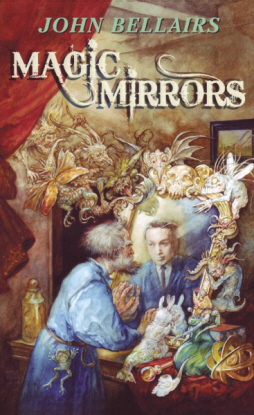 But Bellairs was more than that. He was also a first-class fantasist, whose one book for adults, The Face in the Frost, is something unique. Written before his tales for children, on its publication in 1969 it was described by Lin Carter as one of the three best fantasies to have appeared since The Lord of the Rings.
But Bellairs was more than that. He was also a first-class fantasist, whose one book for adults, The Face in the Frost, is something unique. Written before his tales for children, on its publication in 1969 it was described by Lin Carter as one of the three best fantasies to have appeared since The Lord of the Rings.